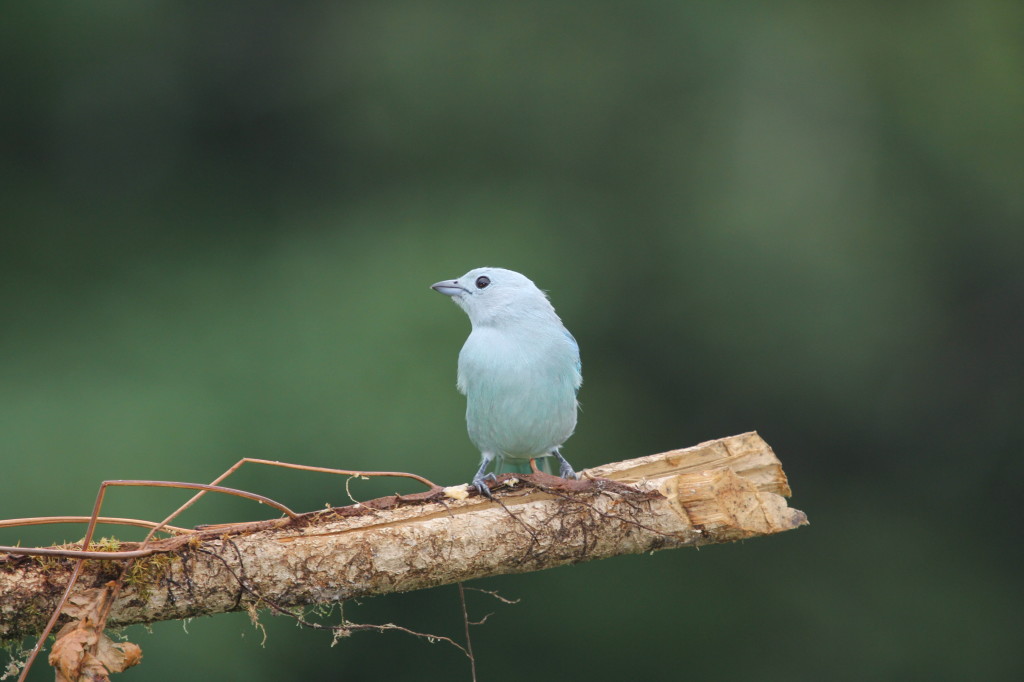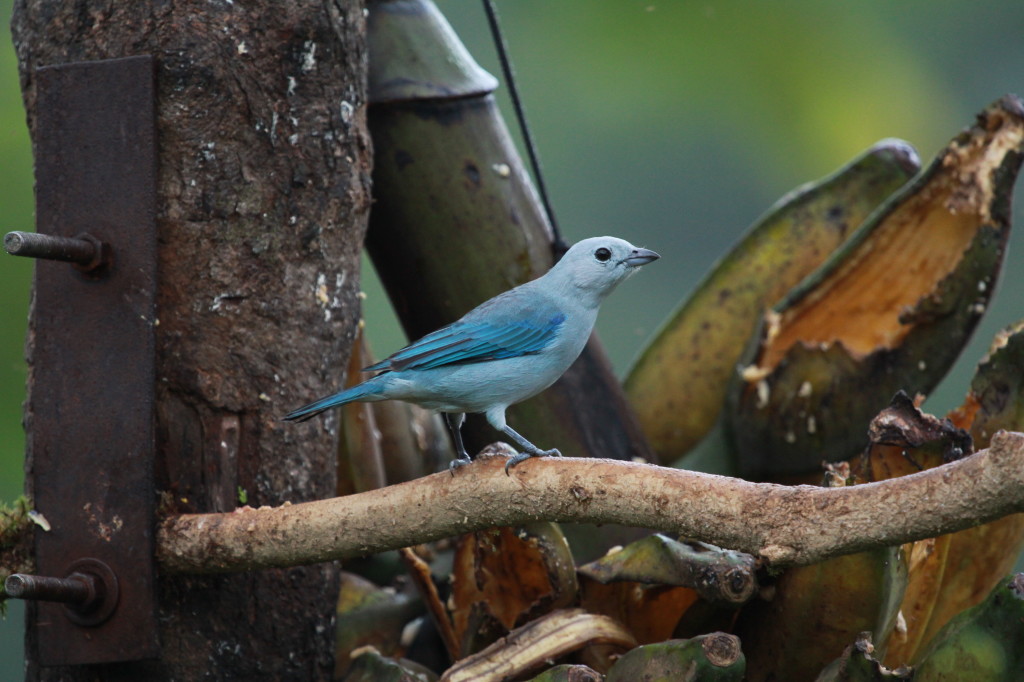The Blue-grey Tanager (Thraupis episcopus) is a medium-sized South American songbird of the Tanager family, Thraupidae. Its range is from Mexico south to northeast Bolivia and northern Brazil, all of the Amazon Basin, except the very south. It has been introduced to Lima (Peru). On Trinidad and Tobago, this bird is called Blue Jean.

 This delicately hued little beauty has a wide range throughout Central and South America (easily reached with airline miles) and can be easily seen in most of the national parks. I saw them in Crooked Tree, Belize; Tikal, Laguna del Lagarto & Savegre, Costa Rica; and Soberania in Panama.
This delicately hued little beauty has a wide range throughout Central and South America (easily reached with airline miles) and can be easily seen in most of the national parks. I saw them in Crooked Tree, Belize; Tikal, Laguna del Lagarto & Savegre, Costa Rica; and Soberania in Panama.
.
The breeding habitat is open woodland, cultivated areas and gardens. The Blue-grey Tanager lives mainly on fruit, but will also take some nectar and insects. This is a common, restless, noisy and confiding species, usually found in pairs, but sometimes small groups. It thrives around human habitation, and will take some cultivated fruit like papayas (Carica papaya). Many eco-lodges put bananas out to attract them closer. I have no problem with this since bananas are part of their normal diet. Breeding season is from March to July. During this time, the female lays one to three mottled eggs, which she incubates for 12 to 14 days. Once hatched, both parents feed their chicks.
Adult blue-gray tanagers are preyed upon by felines, snakes, birds of prey and crocodilians. Other predators, such as raccoons, eat young birds and eggs. Habitat destruction due to deforestation is the primary threat to this species.
LEARN MORE ABOUT THIS BIRD
VIDEO
This one is long but watch for a few minutes to see the bird’s feeding habits and sound.
